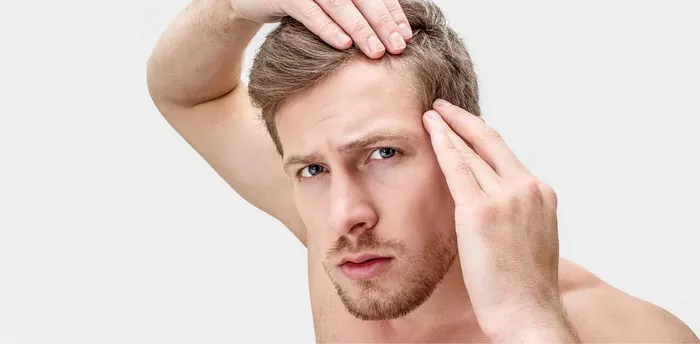Hair shedding is a common concern that often triggers worry and questions about its normalcy. Understanding the intricacies of the hair growth cycle and the factors influencing shedding is crucial for dispelling myths and promoting hair health. In this comprehensive guide, we will explore the normalcy of hair shedding and provide insights into why it occurs.
1. The Hair Growth Cycle: An Overview
Before delving into the specifics of hair shedding, let’s establish a foundational understanding of the hair growth cycle. This cycle consists of three main phases:
a. Anagen Phase
The anagen phase is the active growth phase, during which hair follicles produce new cells and lengthen the hair shaft. This phase can last anywhere from two to seven years, depending on individual factors such as genetics and health.
b. Catagen Phase
The catagen phase is a transitional phase that marks the end of active growth. It lasts for a brief period, around two to three weeks, during which the hair follicle shrinks and detaches from the blood supply.
c. Telogen Phase
The telogen phase, often referred to as the resting phase, is when the hair is fully formed but not actively growing. Approximately 10-15% of hair is in this phase at any given time, lasting about three months. After the telogen phase, the hair sheds, and the cycle begins anew.
2. Understanding Normal Hair Shedding
It’s crucial to recognize that hair shedding is a natural and integral part of the hair growth cycle. Understanding what constitutes normal shedding can alleviate concerns and promote a healthier perspective on hair health.
a. Daily Shedding Quota
On average, individuals shed between 50 to 100 hairs per day. This shedding is distributed across the scalp and is often imperceptible. Monitoring daily shedding can help individuals differentiate between regular shedding and potential issues.
b. Seasonal Variations
Hair shedding can exhibit seasonal variations, with slightly increased shedding in the fall and spring. This phenomenon, known as seasonal shedding, is a response to changes in daylight and temperature. It’s essential to distinguish this normal pattern from excessive shedding.
c. Postpartum Shedding
After pregnancy, many women experience postpartum shedding, attributed to hormonal fluctuations. This shedding is temporary, and the hair growth cycle usually stabilizes within a few months.
d. Age-Related Shedding
As individuals age, the hair growth cycle may slow down, leading to increased shedding. Age-related shedding is a natural process, and maintaining a healthy lifestyle can positively impact overall hair health.
3. Factors Influencing Excessive Shedding
While some shedding is normal, certain factors can contribute to excessive hair loss. Recognizing these factors is essential for identifying when shedding may indicate an underlying issue.
a. Nutritional Deficiencies
Inadequate intake of essential nutrients, such as iron, zinc, and vitamin D, can contribute to excessive shedding. A balanced diet with sufficient vitamins and minerals is crucial for maintaining healthy hair.
b. Hormonal Imbalances
Hormonal fluctuations, whether due to pregnancy, thyroid disorders, or menopause, can impact the hair growth cycle. Seeking medical advice and addressing hormonal imbalances can mitigate excessive shedding.
c. Stress and Lifestyle Factors
High-stress levels and poor lifestyle choices, including lack of sleep and excessive styling or chemical treatments, can contribute to increased shedding. Managing stress and adopting a healthy lifestyle are key components of preventing excessive hair loss.
d. Medical Conditions
Certain medical conditions, such as alopecia areata or autoimmune disorders, can lead to abnormal hair shedding. Consultation with a healthcare professional is crucial for diagnosing and addressing these conditions.
4. Tips for Managing and Minimizing Shedding
While some shedding is inevitable, adopting proactive measures can help manage and minimize excessive hair loss. Consider the following tips for promoting a healthy scalp and hair:
a. Balanced Nutrition
Ensure a well-rounded diet rich in vitamins, minerals, and proteins to support optimal hair health. Consider consulting with a nutritionist to address specific dietary needs.
b. Gentle Hair Care Practices
Avoid aggressive brushing and tight hairstyles that can contribute to mechanical hair damage and shedding. Use a wide-tooth comb and opt for gentle hair care products to minimize stress on the hair shaft.
c. Regular Scalp Massages
Stimulate blood circulation to the scalp by incorporating regular scalp massages into your routine. This promotes a healthy environment for hair growth and can help reduce shedding.
d. Professional Advice
If you notice a significant increase in hair shedding or have concerns about your hair health, seek professional advice from a dermatologist or trichologist. Early intervention can address underlying issues and prevent further hair loss.
See Also: How to Prevent Lupus Hair Loss – A Comprehensive Guide
In conclusion
Understanding the normal cycle of hair shedding is essential for maintaining a positive and informed perspective on hair health. While shedding is a natural process, monitoring for excessive loss and addressing underlying factors can contribute to overall hair well-being. By embracing a holistic approach that considers lifestyle, nutrition, and potential medical factors, individuals can navigate the complexities of hair shedding and foster a healthier relationship with their tresses.


